
What Size Bike Do I Need – Complete Guide for All Riders
Finding the right bike size is key for comfort, safety, and performance—whether it’s a road bike, mountain bike, hybrid, or e-bike. A properly sized bike or electric bike ensures better control, efficient pedaling, and a more enjoyable ride.
This guide will help you quickly determine what size bike or e-bike you need, using height, inseam, and reach measurements, with easy-to-read charts for all riders.
What Size Bike Do I Need?
To find the right bike or e-bike size, start with your height and inseam, which determine stand-over height, saddle position, and handlebar reach. Road bike frames typically range from 48 cm to 62 cm, mountain bikes from 13 inches to 22 inches, and hybrid or gravel bikes usually follow road bike sizing. For kids, use wheel size and inseam, not age, for proper fit and safety.
If you fall between sizes, a long torso calls for a larger frame, while long legs favor a smaller frame with saddle adjustments. Fine-tuning saddle, handlebars, and stem helps optimize comfort and posture. Choosing the correct size improves control, reduces injury risk, and ensures a more enjoyable ride. Always check the manufacturer’s sizing guide and test ride when possible.
Why Getting the Right Bike Size Matters
Choosing the correct bike or e-bike size is crucial for both comfort and safety. Riding a bike that is too small or too large can lead to discomfort, poor handling, and even injuries over time. An ill-fitting bike can strain your knees, back, and wrists, making each ride less enjoyable and potentially causing long-term issues.
A properly sized frame, on the other hand, improves riding efficiency, posture, and overall control. It allows you to pedal smoothly, handle turns confidently, and maintain a comfortable position for longer rides.
While adjustments to the saddle, handlebars, and stem can fine-tune your fit, these cannot fully compensate for a frame that is the wrong size. The frame size is the foundation of a good bike fit, making it essential to choose correctly from the start.
Key Measurements to Determine Your Bike Size
Choosing the right bike or e-bike size starts with understanding the key body measurements that affect fit. These include rider height, inside leg (inseam), and torso length (reach). Correctly measuring these ensures comfort, efficiency, and control on any type of bike.
Rider Height
Your height is the first and most straightforward measurement to estimate the appropriate bike frame size. Bike manufacturers often provide height-based size charts for road bikes, mountain bikes, hybrids, and e-bikes, giving a general starting point for your selection.
For example, a rider who is 170 cm (5’7”) tall typically fits a medium road bike frame (around 54 cm) or a medium mountain bike frame (17–18 inches). While height alone is useful, it does not account for differences in leg length, torso length, or riding style, so it should be combined with other measurements for a more precise fit.
Inside Leg / Inseam
The inside leg or inseam measurement is crucial for determining stand-over height and saddle positioning. To measure your inseam:
-
Stand straight with your feet about 15 cm apart.
-
Measure from the floor to your crotch along the inside of your leg.
-
For e-bikes or mountain bikes, subtract a few centimeters to account for clearance above the top tube.
A correct inseam measurement ensures you can comfortably straddle the bike without hitting the frame, reduces knee strain when pedaling, and allows proper saddle height adjustment. A saddle that is too high or too low can cause discomfort and reduce pedaling efficiency, so inseam is a key factor in choosing the right frame size.
Reach / Torso Length
Reach is the horizontal distance from the saddle to the handlebars, largely influenced by torso and arm length. This measurement affects your riding posture, comfort, and control.
-
A rider with a long torso may feel cramped on a standard frame; choosing a larger frame improves reach and reduces back and shoulder strain.
-
A rider with long legs but a shorter torso might be better suited to a smaller frame, adjusting the saddle height to maintain proper leg extension.
Correct reach is especially important for road and gravel bikes, where aerodynamic positions require a slightly stretched posture, and for e-bikes, where relaxed upright positioning is common for comfort on longer rides.
Standard Bike Size Chart – Road Bikes and E-Bikes
Selecting the right bike or e-bike frame size ensures comfort, efficiency, and safety. While height is a common reference, combining it with inseam measurements gives a more accurate fit, especially for saddle height and stand-over clearance. The table below provides a detailed guide for road bikes and e-bikes:
|
Frame Size (cm) |
Rider Height (cm) |
Rider Height (ft/in) |
Inseam (cm) |
Inseam (in) |
|
47 |
152–158 |
4’11.8”–5’2.2” |
71–75 |
28.0–29.5 |
|
50 |
158–163 |
5’2.2”–5’4.2” |
74–77 |
29.1–30.3 |
|
52 |
163–168 |
5’4.2”–5’6.1” |
76–79 |
29.9–31.1 |
|
54 |
168–174 |
5’6.1”–5’8.5” |
78–82 |
30.7–32.3 |
|
56 |
174–180 |
5’8.5”–5’10.9” |
81–85 |
31.9–33.5 |
|
58 |
180–185 |
5’10.9”–6’0.8” |
84–87 |
33.1–34.3 |
|
60 |
185–190 |
6’0.8”–6’2.8” |
86–90 |
33.9–35.4 |
|
62 |
190–195 |
6’2.8”–6’4.8” |
89–92 |
35.0–36.2 |
How to Use This Bike Size Chart
Start with your height to find a baseline frame size, then check your inseam for proper stand-over clearance and saddle height. Adjust for body proportions—longer torsos may need a larger frame, longer legs and a smaller frame with saddle tweaks. For e-bikes, consider motor and battery placement and consult manufacturer sizing. Always pair the chart with a test ride and fine-tune saddle and handlebar positions for comfort, control, and efficiency.
What if I'm Between Bike Sizes?
If your measurements fall between two frame sizes, choosing the right bike or e-bike becomes crucial for comfort, control, and long-term riding efficiency. Most experts recommend selecting the smaller frame, as it can be fine-tuned with adjustments like saddle height, saddle setback, handlebar height, and stem length to achieve optimal reach and posture. This helps prevent strain on your knees, back, and shoulders while maintaining precise handling and balance, especially on e-bikes like isinwheel models.
For riders who are unsure, it’s essential to consult the manufacturer’s sizing chart or a professional bike shop. A proper test ride can reveal subtle fit issues that measurements alone may miss, such as reach comfort, pedaling efficiency, and overall stability. Investing time in these adjustments ensures that your bike or e-bike provides maximum safety, responsiveness, and riding enjoyment, regardless of whether your height or inseam sits between two standard frame sizes.
How to Measure Yourself for a Bike
Getting the correct bike or e-bike fit starts with accurate measurements. Even though handlebars, stems, and saddles can be adjusted, the right frame size is essential for comfort, performance, and injury prevention. This section covers the key measurements every rider should know.
Stand-over Height
Stand-over height ensures that you can safely straddle the bike without discomfort or risk of injury. To measure, place the bike on level ground and stand over the top tube with your feet flat. There should be 2–5 cm (1–2 inches) of clearance between your crotch and the top tube for road and hybrid bikes. Mountain bikes require slightly more clearance for off-road riding. Proper stand-over height prevents scrapes, allows easy dismounting, and ensures confidence during sudden stops.
Saddle Height
The saddle height affects pedaling efficiency, knee comfort, and power transfer. Use the heel-on-pedal method: sit on the saddle and place your heel on the pedal with the crank at its lowest position. Your leg should be fully extended but not locked. When pedaling normally on the ball of your foot, your knee should have a slight bend. Adjust the saddle height gradually to match your leg length, riding style, and preferred comfort level.
Handlebar Reach and Position
Handlebar reach determines how stretched out or upright you will sit, affecting comfort and control. For flat-bar bikes, wider bars reduce reach and improve stability. For drop-bar bikes, multiple hand positions require careful reach adjustment. The finger-width method is a simple way to check reach: sit on the saddle, place your elbows on the saddle nose, and stretch your fingers toward the center of the handlebar. The ideal reach is usually 0–4 finger-widths from your fingertips. Adjust stem length or handlebar height to fine-tune without affecting handling.
Posture Check
Correct riding posture prevents strain on your back, wrists, and shoulders. While sitting on the bike, remove your hands from the handlebars and place them loosely behind your back. If you can maintain this posture comfortably, your setup is likely suitable. If not, raise the handlebars or reduce reach to shift weight off your hands. Proper posture improves control, efficiency, and comfort, especially on longer rides.
Tips for Choosing the Best Bike Fit
Adjust Your Saddle for Comfort and Efficiency
Proper saddle height and setback are essential for safe, efficient riding. Set the saddle so your legs extend fully while pedaling without locking your knees. Adjust the setback to ensure your knees align with the pedals, optimizing power transfer and reducing strain on joints. Even small changes of 0.5–1 cm can have a noticeable impact on pedaling efficiency and overall comfort.
Fine-Tune Handlebar Position and Reach
Handlebar height, stem length, and width directly affect riding posture and control. Position the handlebars to maintain a natural, upright posture, which reduces tension in your shoulders, wrists, and back. Stem length should correspond to torso length—longer torsos may need a slightly longer stem, while shorter torsos may require a shorter stem. Choose handlebar width to match your shoulder width for improved stability and handling.
Consider Body Proportions When Between Sizes
If you fall between frame sizes, your body proportions determine the best fit. Riders with a longer torso benefit from a slightly larger frame to reach the handlebars comfortably. Those with longer legs may prefer a slightly smaller frame combined with a higher saddle to maintain proper leg extension. Considering the torso-to-leg ratio ensures correct posture, effective pedaling, and better overall bike control.
Always Take Test Rides
Measurements alone cannot reveal subtle discomfort or handling issues. Test rides allow you to evaluate saddle comfort, reach, pedaling motion, and overall bike responsiveness. Ride in varied conditions, including flat roads, gentle climbs, and urban terrain, to ensure the bike or e-bike feels balanced and comfortable in real-world scenarios.
Professional Bike Fitting for Maximum Performance
A professional fitting session analyzes body dimensions, riding posture, and pedaling mechanics to fine-tune every contact point—saddle, pedals, and handlebars. This ensures maximum comfort, efficiency, and control, especially for long-distance riders or those experiencing discomfort. Professional fittings optimize power transfer and prevent strain, making rides safer and more enjoyable.
Maintain Proper Fit Over Time
Even after achieving the perfect fit, body changes and component wear can affect comfort. Regularly recheck saddle height, handlebar reach, and contact points, adjusting as needed to maintain optimal efficiency and prevent injury.
Pro Tip
The right frame is just the start. Fine-tuning every contact point, testing under real conditions, and considering professional advice ensures your bike or e-bike delivers maximum comfort, control, and performance on every ride.
Find Your Perfect Fit: isinwheel Electric Bikes for Every Rider
isinwheel electric bikes are designed for riders of all heights, offering comfort, control, and efficiency. Adjustable saddles and handlebars ensure a personalized fit, improving posture, pedaling, and overall ride experience.
U1 – Ideal E-Bike for Smaller Riders
The isinwheel U1 electric bike is an ideal e-bike for smaller riders, fitting heights from 150–185 cm. Featuring a 36V 7.8Ah battery, 500W peak power, and a top speed of 20 MPH, it delivers smooth, efficient rides, while the rear mid shock absorber ensures comfort over uneven terrain.
Lightweight at 23.2 kg and fully foldable, the U1 is perfect for commuting, city riding, or leisure trips. Its adjustable saddle and handlebars support proper posture, reduce strain, and provide a comfortable reach, making the isinwheel U1 a practical, stylish, and high-performance electric bike for smaller riders looking for the perfect fit.
U2 – Ideal Electric Bike for Taller Riders
The isinwheel U2 electric bike is perfect for taller riders, accommodating heights from 160–192 cm. Equipped with a 36V 13Ah removable battery and 500W peak power, it offers a long-range ride of up to 65 miles, ideal for commuting or recreational cycling.
Its ergonomic frame, along with adjustable saddle and handlebars, ensures proper posture, efficient pedaling, and maximum comfort. Lightweight yet durable, the U2 provides smooth handling, stability, and responsive performance, making it an excellent choice for riders seeking an electric bike that fits taller body proportions and answers the question, “what size bike do I need.”
Conclusion
Choosing the right bike or e-bike size is essential for comfort, safety, and performance. To determine what size bike you need, measure your height, inseam, and torso for proper frame fit and riding posture. isinwheel electric bikes offer adjustable models for various rider heights, ensuring a comfortable, efficient, and enjoyable ride every time.
FAQs
1. What size bike do I need for my height?
Choosing the right bike size starts with your height and inseam measurement. For road bikes, most adults between 170–178 cm tall fit 54–56 cm frames. Mountain bikes for the same height usually require 18–19 inch frames. Always adjust saddle height and handlebar reach for comfort and proper riding posture, especially for electric bikes like isinwheel e-bikes.
2. What height is a 26-inch bike for?
A 26-inch wheel bike is ideal for riders around 140–170 cm (4’7”–5’7”). This size provides balanced stability and handling, making it suitable for both adults and older kids.
3. Is a 26-inch bicycle for adults?
Yes, 26-inch bicycles are commonly used by adults, particularly in mountain bikes, hybrid bikes, and some commuter e-bikes. Riders of average height will find it comfortable, while taller riders may prefer 27.5-inch or 29-inch wheels for better leg extension and riding efficiency.
4. Is a 20-inch bike frame large?
A 20-inch frame is considered medium to large for youth and small adult riders, typically fitting 152–163 cm (5’0”–5’4”). Taller adults should choose larger frames to maintain proper posture, comfort, and efficient reach to handlebars.
The Latest Posts
Explore isinwheel products
City E Scooter | Off-Road Scooter
Fastest Scooter | Kids Scooters




















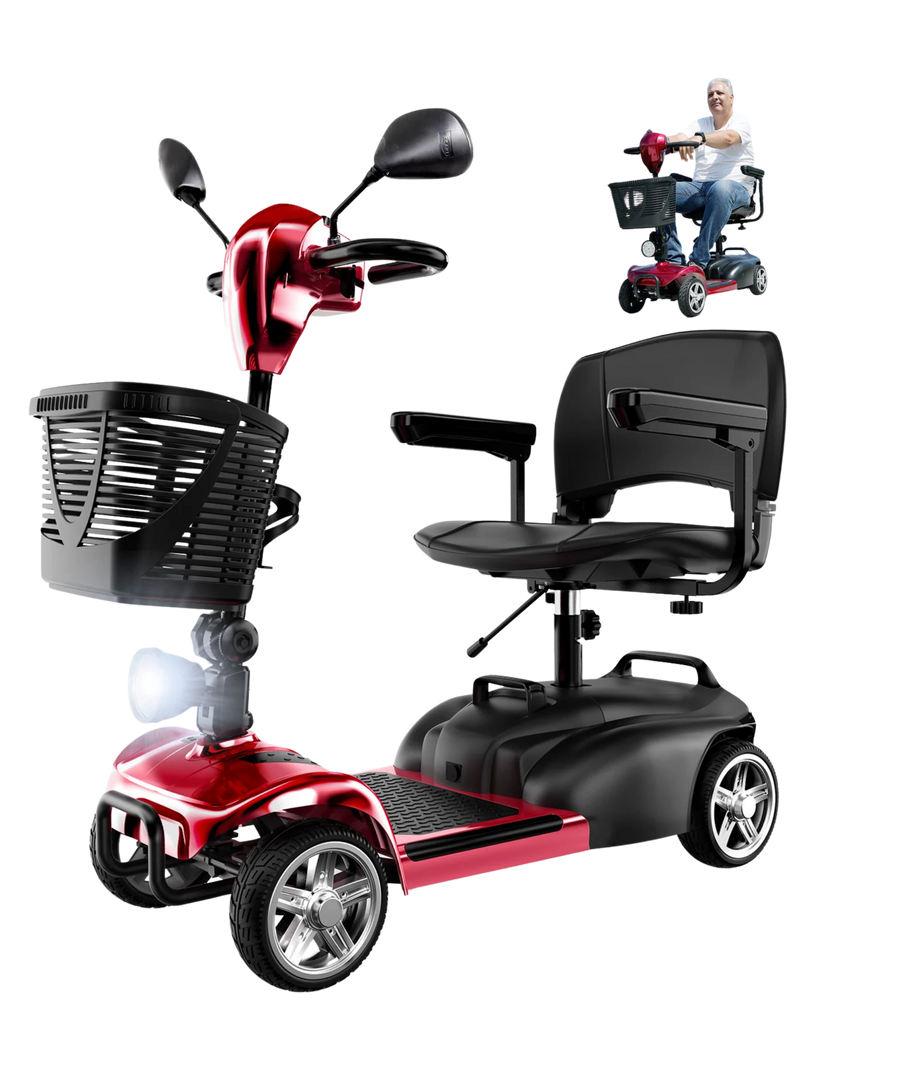
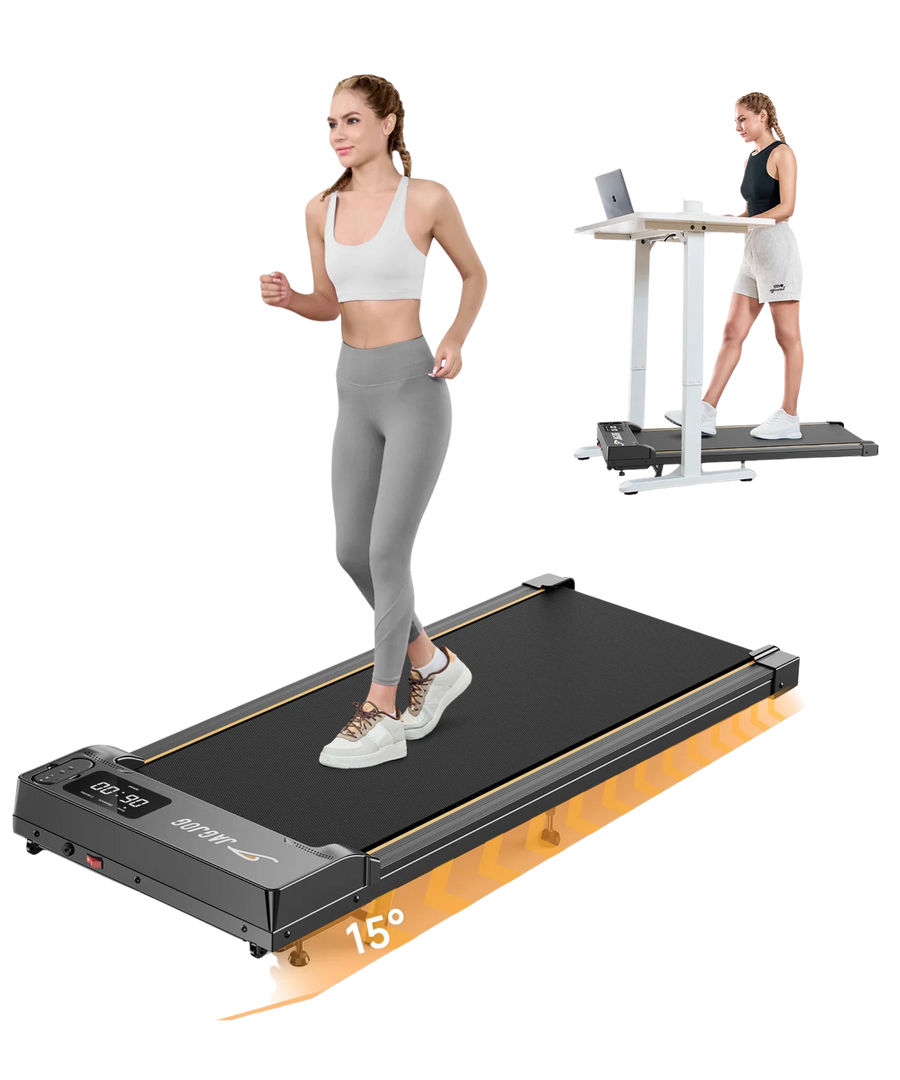

























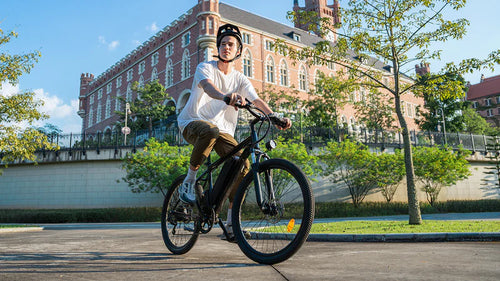
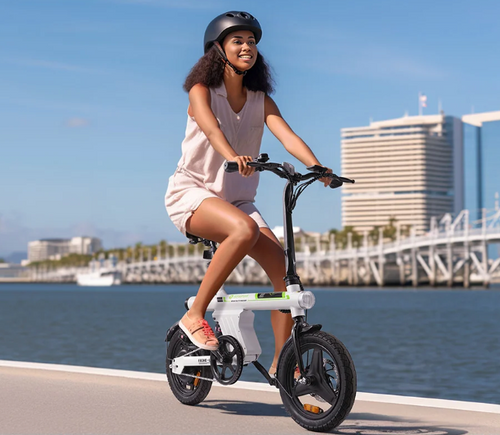


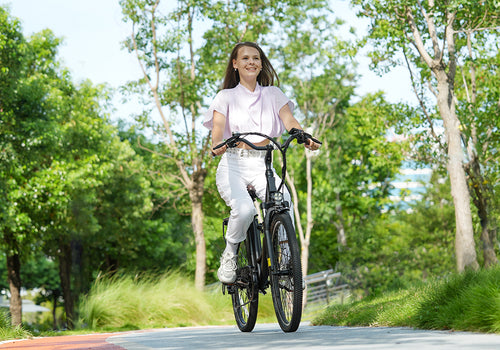
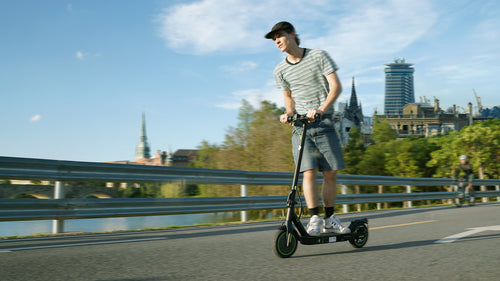


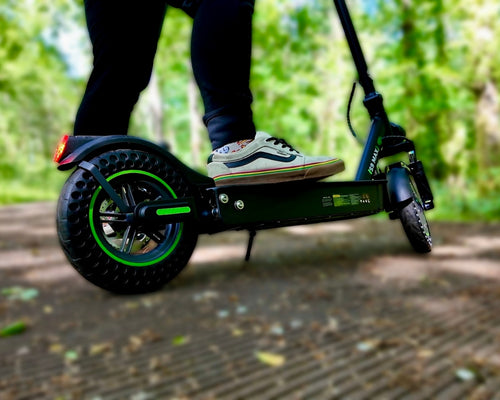
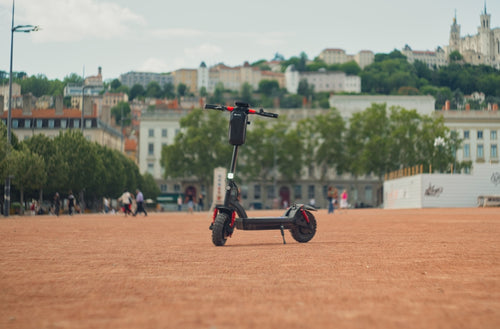
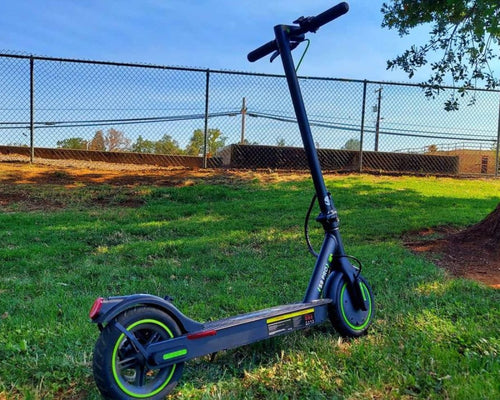





Leave a comment